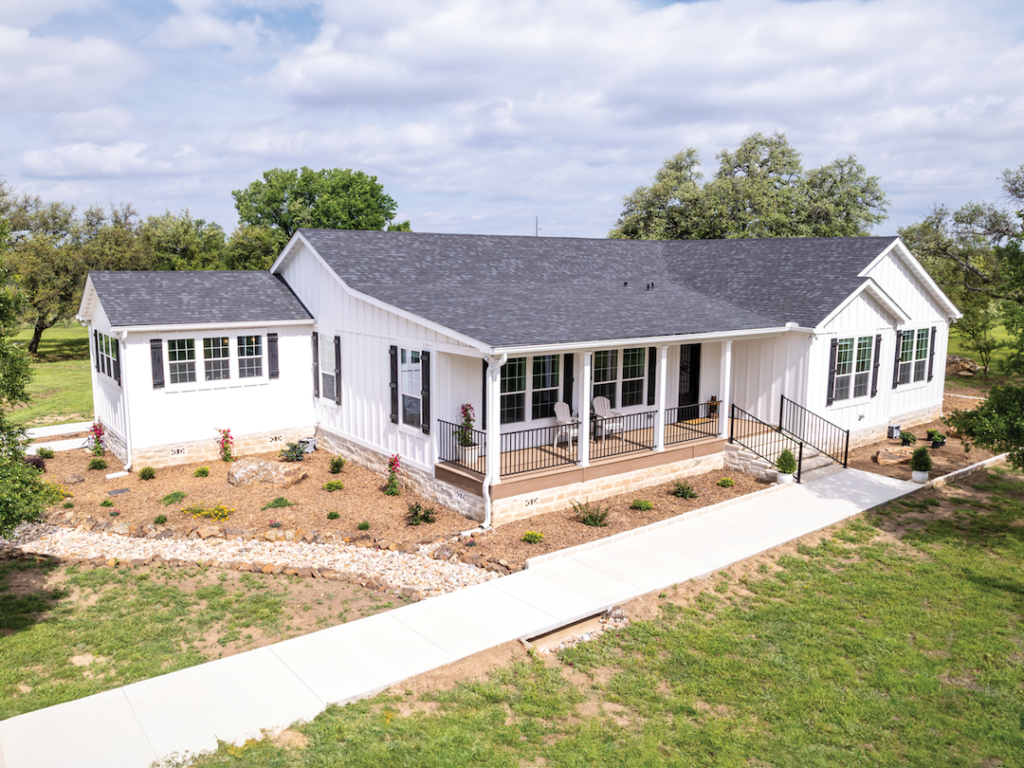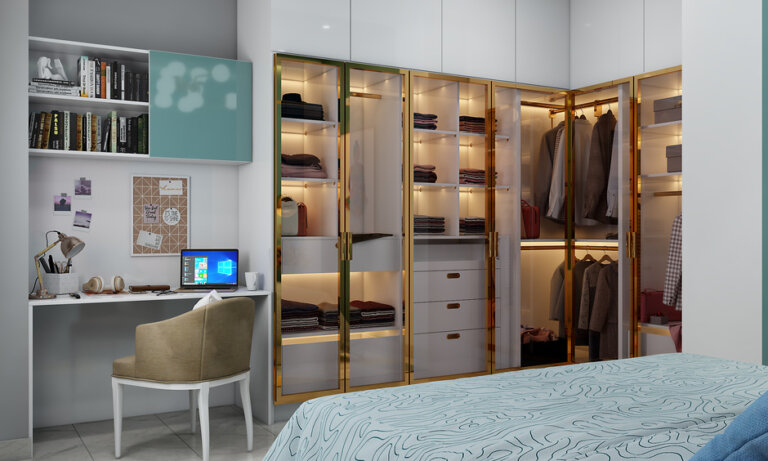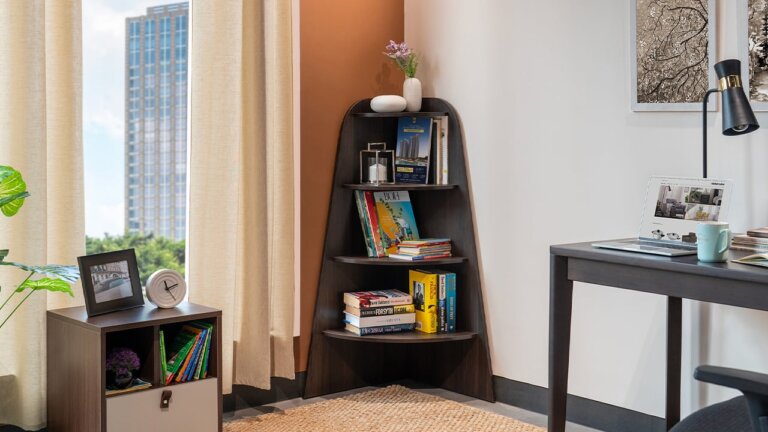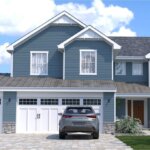Imagine having a home that fits your lifestyle perfectly, crafted with precision and care. A place where every room, every corner, is designed just for you.
Welcome to the world of modular homes. These innovative dwellings are changing the way you think about home building and living. With modular homes, you have the flexibility to choose a design that suits your needs, without the lengthy construction process.
They’re fast, cost-effective, and environmentally friendly. But that’s not all. Modular homes offer a level of customization that traditional homes simply can’t match. Curious about how you can transform your living space with modular magic? Let’s delve into why modular homes might be the perfect choice for you, ensuring you get the home of your dreams.
What Are Modular Homes?
Modular homes are changing how people think about housing. These homes are built in sections, or modules, in a factory setting. Once built, these modules are transported to the home site and assembled. This process allows for a quicker and more efficient construction timeline compared to traditional homes. People love modular homes because they offer a blend of sustainable housing, customizable floor plans, and affordable housing solutions.
Modular homes fall under the category of prefabricated homes. This means they are constructed off-site, in a controlled environment. This method is known as modular construction. It ensures high-quality building standards as each module is inspected before leaving the factory.
Once modules reach the building site, they are put together to form a complete home. This quick assembly process means less time on-site and fewer delays caused by weather. These homes offer modern home designs and can be customized to fit various needs and tastes.
- Energy-Efficient Designs: Many modular homes come with energy-saving features. This can lower utility bills.
- Eco-Friendly Building Materials: Using sustainable materials helps reduce environmental impact.
- Cost-Effective: Building in a factory setting reduces waste and labor costs, making these homes more affordable.
- Design Flexibility: Choose from a variety of customizable floor plans to suit your lifestyle.
How Modular Homes Are Built
- Design and Planning: Work with designers to create your ideal home layout.
- Factory-Building: Modules are constructed in a climate-controlled factory.
- Transportation: Completed modules are delivered to the home site.
- On-Site Assembly: Modules are assembled and connected to utilities.
Why Choose Modular Homes?
These homes are a smart choice for those seeking energy-efficient designs and modern home designs. With their quick assembly and use of eco-friendly building materials, modular homes offer an attractive option for sustainable housing.

Credit: prattmodular.com
Modular Homes Cost Calculator
Estimate costs of modular homes (Single-section, Multi-section, Custom Designs). Fully responsive, SEO-ready, with real-time cost breakdown and financing tips.
Benefits Of Modular Homes
Modular homes, also known as prefabricated homes, offer a modern solution to traditional home building. These homes are built in sections, known as residential modules, in a factory setting before being transported to their final location. The advantages of modular construction are numerous, making them an attractive option for many homeowners. Let’s explore the key benefits of modular homes, including cost efficiency, speed of construction, and sustainability.
Cost Efficiency
One of the most appealing aspects of modular homes is their cost efficiency. Factory-built houses often come with a lower price tag than traditional homes due to streamlined processes and bulk purchasing of materials. Here’s how modular construction benefits your budget:
- Reduced Labor Costs: The home building process in a controlled factory environment requires fewer on-site workers, cutting down labor expenses.
- Minimal Waste: Precise construction techniques lead to less waste, which saves money on materials.
- Energy-Efficient Housing: Many modular homes incorporate energy-saving features, reducing long-term utility bills.
The table below highlights the cost comparison between modular and traditional homes:
| Aspect | Modular Homes | Traditional Homes |
|---|---|---|
| Average Cost per Square Foot | $50 – $100 | $100 – $150 |
| Construction Waste | Minimal | Significant |
Speed Of Construction
The speed of construction is a major advantage of modular homes. Prefabricated homes can be built much faster than their traditional counterparts due to the efficient construction timeline:
- Factory Production: Residential modules are built simultaneously, unlike traditional homes where each stage follows the previous.
- Weather Independence: Indoor factory settings eliminate weather-related delays, ensuring a consistent schedule.
- Quick Assembly: Once on-site, the modules are swiftly assembled, drastically reducing the time to move in.
Typically, a modular home can be completed in just a few weeks, compared to months for a traditional build. This rapid completion allows homeowners to enjoy their new spaces sooner.
Sustainability
Sustainability is a crucial benefit of modular homes, aligning with the growing demand for green building materials and practices. Modular homes offer several environmentally friendly features:
- Energy Efficiency: Enhanced insulation and energy-efficient designs reduce the home’s carbon footprint.
- Reduced Waste: The controlled factory environment ensures precise cuts and minimal waste.
- Eco-Friendly Materials: Many manufacturers use sustainable materials in the construction process.
These factors contribute to modular homes being a smart choice for those seeking affordable housing solutions that are kind to the planet. By opting for modular construction, homeowners can enjoy a sustainable living environment that supports a healthier future.
Types Of Modular Homes
Modular homes are a popular choice for many looking for a quick and cost-effective way to own a home. These homes are built in sections at a factory and then transported to the building site. This process is known as Modular Construction. There are various types of modular homes available, each offering unique advantages. Understanding these types can help you choose the best option for your needs.
Single-section
Single-section modular homes, also known as single-wide Manufactured Houses, are a great option for those seeking a compact and affordable living space. These homes are built as one continuous section and are typically narrower than their multi-section counterparts. Here are some key features:
- Eco-Friendly Housing: Often constructed with sustainable materials, reducing the environmental impact.
- Portability: Easy to move, making them ideal as Portable Homes.
- Affordability: Generally less expensive due to their size and simpler design.
Single-section homes are perfect for small families or individuals. They offer all the essentials without unnecessary space. A simple Home Design with efficient space utilization makes them a practical choice. Despite their smaller size, these homes can include all modern amenities. They often feature energy-efficient systems supporting Sustainable Living.
Multi-section
Multi-section modular homes, also known as double-wide or triple-wide homes, offer more space and flexibility. These homes are constructed in multiple sections and assembled on-site. Here are some benefits:
- Spacious Living: Provides more room, suitable for larger families.
- Customizable Layouts: Offers flexibility in Home Design, allowing for personalized touches.
- Enhanced Features: Can include luxury features like walk-in closets and large kitchens.
| Feature | Single-Section | Multi-Section |
|---|---|---|
| Size | Up to 18 feet wide | Over 20 feet wide |
| Flexibility | Limited | High |
Multi-section homes are ideal for those who need more space. They blend the convenience of Factory-Built Homes with the comfort of traditional houses. Their Modular Architecture allows for extensive customization and adaptability.
Custom Designs
Custom-designed modular homes are tailored to the owner’s preferences and lifestyle. This type of modular home emphasizes personalization and unique Modular Architecture. Here’s what makes them special:
- Unlimited Possibilities: Design your dream home with endless customization options.
- Innovative Features: Include cutting-edge technology and eco-friendly solutions.
- Personalized Aesthetics: Choose materials and finishes that reflect your style.
Custom designs offer the ultimate in flexibility and personalization. They combine the benefits of Prefabricated Homes with unique architectural elements. Whether you want a contemporary style or a traditional look, these homes can cater to your vision. They also support Sustainable Living through eco-conscious choices in materials and construction practices. Custom modular homes are the pinnacle of personalized Factory-Built Homes.

Credit: www.claytonhomes.com
Building Process
Modular homes are changing the way people think about construction. These homes are built in sections or modules in a factory setting. The building process is fast, efficient, and eco-friendly. Each stage, from design to on-site assembly, offers unique benefits. Let’s explore the building process of modular homes.
Design Phase
The design phase sets the foundation for your modular home. It offers architectural flexibility, letting you customize your home to fit your needs.
- Custom Modular Designs allow you to choose floor plans, room sizes, and interior styles.
- Energy-Efficient Homes are designed with sustainability in mind, ensuring lower utility costs.
A typical design process involves:
| Step | Description |
|---|---|
| Consultation | Discuss your needs and budget with the design team. |
| Blueprint Creation | Develop detailed plans for each module of the home. |
| Approval | Finalize the design and move to the next phase. |
With prefabricated homes, you can have a tailored design without the wait.
Manufacturing
The manufacturing process takes place in a controlled environment. This ensures quality control in manufacturing and builds confidence in the final product.
During manufacturing, each module is built with precision. This is because off-site construction reduces the risks of weather delays. The factory setting allows for:
- Consistent quality checks.
- Use of sustainable materials.
- Efficient use of resources.
The benefits of this method include:
- Reduced waste, leading to sustainable building.
- Enhanced durability and strength.
- Quicker turnaround times.
This phase ensures each module is ready for rapid assembly on-site.
On-site Assembly
Once the modules are manufactured, they are transported to the building site. This is where the magic happens: on-site assembly.
The advantages of this phase include:
- Rapid assembly reduces construction time significantly.
- Less disturbance to the environment.
- Easy adaptation to site conditions.
Typically, the on-site assembly involves:
| Step | Action |
|---|---|
| Foundation Preparation | Prepare the site for module placement. |
| Module Installation | Install modules quickly using cranes. |
| Finishing Touches | Complete the exterior and interior work. |
With modular home financing, owning a high-quality home is more accessible than ever.
Financing Options
Modular homes are becoming a popular choice for those seeking sustainable housing. Their versatility and cost-effectiveness make them an attractive option. Yet, understanding the financing options can be challenging. This guide will explore various ways to fund your modular housing project. Whether through loans, government programs, or private financing, each path has unique benefits. Learn how to navigate the financial landscape for your dream prefab home.
Loans For Modular Homes
Home loans for modular homes often resemble traditional mortgages. Yet, there are key differences. Modular homes, unlike manufactured homes, qualify for more conventional loan products. Two main types of loans cater to modular housing:
- Construction Loans: These cover the building phase. They convert to a mortgage once the home is complete. Often, interest rates are higher during construction.
- Permanent Loans: These are like standard mortgages. They start after construction ends. Their terms can vary widely.
Each loan type has its own benefits. Construction loans offer flexibility during building. Permanent loans provide long-term stability. Compare interest rates and terms. Choose what suits your financial situation best.
Some lenders specialize in modular home loans. They understand prefab homes’ unique needs. Their expertise can simplify the loan process. Research different financial institutions. Find one that aligns with your real estate investment goals.
Government Programs
Government programs can be an excellent resource for homebuyers. They offer assistance that traditional loans might not. Many programs support sustainable housing, including modular homes. Here are some common options:
- FHA Loans: These are ideal for first-time homebuyers. They often have lower down payments and flexible credit requirements.
- VA Loans: Available to veterans and active-duty service members. They offer benefits like no down payment.
- USDA Loans: These target rural areas. They provide low-interest rates and zero down payment options.
These programs can make modular home ownership more accessible. They often include homebuyer assistance for those with limited funds. It’s essential to check eligibility criteria. Each program has its own rules and restrictions.
Government support can ease the financial burden. It encourages more people to consider modular home benefits. Explore these options if you’re a qualifying candidate.
Private Financing
Private financing is another viable option for modular housing. It involves borrowing from private lenders instead of banks. Real estate investment firms and private investors often offer these loans. Here’s what you should know:
| Private Financing Feature | Benefits |
|---|---|
| Flexible Terms | Customizable repayment plans to fit your budget. |
| Quick Approval | Faster processing times than traditional loans. |
| Less Stringent Requirements | Often easier to qualify, especially for those with unique financial situations. |
Private financing is suitable for those who need immediate funds. It can also be a good choice for those with non-traditional credit backgrounds. Always review the terms carefully. Look for hidden fees or high-interest rates.
Private lenders can offer unique solutions. They may provide options that banks do not. This flexibility can make your prefab home dreams a reality.

Credit: prattmodular.com
Common Misconceptions
Modular homes are often misunderstood. Despite their growing popularity, many people still hold onto outdated beliefs about them. These misconceptions can cloud the true benefits of prefabricated homes. Let’s clear the air and explore some common myths surrounding modular homes.
Quality Concerns
Many assume modular homes lack construction quality compared to traditional homes. This couldn’t be further from the truth. Modular homes are built in controlled environments, ensuring consistency and precision. Each module undergoes strict building regulations to meet high standards. Consider the following benefits:
- Controlled factory conditions reduce weather-related delays.
- Consistent quality checks during the building process.
- Use of durable materials ensures longevity.
While some believe modular homes are similar to manufactured homes, they differ significantly. Modular homes are permanent structures built to last, often exceeding the quality found in site-built homes.
Insurance Issues
Another misconception involves home insurance for modular homes. Many think securing insurance for prefabricated homes is difficult. In reality, modular homes qualify for the same types of home insurance as traditional homes. Here’s why:
- They meet local building codes and regulations.
- Insurance companies recognize them as permanent structures.
- Comparable risks to site-built homes lead to similar insurance rates.
Insurance concerns are often unfounded. Modular home financing options also align with those of traditional homes, further dispelling myths related to insurance.
Resale Value
Property value is a major concern for homeowners. Many worry modular homes lack resale value. The truth is, modular homes hold their value well in the real estate market. Key factors include:
- Energy efficiency features add appeal.
- Quality construction ensures lasting value.
- Growing demand for sustainable housing boosts market interest.
Data shows modular homes appreciate similarly to traditional homes. They are seen as valuable additions to any community.
In summary, misconceptions about modular homes often stem from outdated views. Today’s modular homes offer quality, security, and value comparable to traditional construction methods.
Regulations And Codes
Modular homes are becoming popular due to their flexibility and affordability. These Factory-Built Homes offer an alternative to traditional construction methods. Yet, understanding the regulations and codes governing Modular Construction is essential. These rules ensure safety, quality, and sustainability. This section will delve into the intricacies of these guidelines, highlighting what makes Custom Modular Homes a viable option for Affordable Housing.
Regulatory Framework
Modular homes must comply with stringent regulations. These rules are set to ensure safety and quality across all Manufactured Housing. The regulatory framework includes building codes, zoning laws, and environmental guidelines.
- Building Codes: These codes are crucial for ensuring the structural integrity of Prefabricated Homes. They cover aspects like electrical, plumbing, and mechanical systems.
- Zoning Laws: Zoning laws dictate where Modular Home Kits can be placed. Understanding local zoning requirements helps avoid potential legal issues.
- Environmental Guidelines: Regulations also cover Sustainable Building practices. This ensures Energy-Efficient Homes align with environmental standards.
Compliance And Standards
Compliance with standards is key for Modular Construction. Homes must meet specific criteria set by national and local authorities. This guarantees quality and safety in Home Design.
- National Standards: These standards often include requirements for materials used in Factory-Built Homes.
- Local Requirements: Local standards may vary, focusing on regional climate and environmental concerns.
Inspection And Certification
Inspection plays a vital role in maintaining quality. Modular homes undergo several inspections to ensure they meet all codes. Certification follows these inspections, validating the home’s compliance.
| Inspection Type | Description |
|---|---|
| Structural Inspection | Checks the foundation and overall structure for safety. |
| Electrical Inspection | Ensures wiring meets national safety standards. |
| Plumbing Inspection | Verifies plumbing systems are installed correctly. |
Challenges And Solutions
Challenges exist in navigating regulations. These can include differing codes between regions and the complexity of modular permits. Solutions often involve consulting experts in Modular Construction and staying informed about changes in regulations.
Understanding regulations and codes is essential for anyone considering Custom Modular Homes. Knowledge ensures a seamless building process and compliance, making Affordable Housing achievable and sustainable.
Future Of Modular Homes
Modular homes are gaining popularity due to their affordability and efficiency. These homes, also known as factory-built houses, are constructed in sections in a controlled environment. The future of modular homes is promising. With advancements in technology and design, they are becoming more appealing to a broad audience. The focus is on creating sustainable, eco-friendly living spaces that offer flexibility and comfort. Let’s explore the exciting prospects in the world of modular homes.
Innovative Designs
Modular homes boast customizable floor plans that cater to diverse needs. Designers can create unique layouts that suit individual preferences. This flexibility allows homeowners to have a personalized touch in their living spaces. Below are some key features of innovative designs:
- Eco-Friendly Materials: Sustainable building materials are used to reduce environmental impact.
- Energy Efficiency: Homes are designed to minimize energy consumption, leading to lower bills.
- Smart Home Integration: Advanced technology for security, lighting, and temperature control.
In terms of aesthetics, modular homes are no longer just boxy structures. They now feature modern designs with sleek finishes. This evolution attracts more homeowners looking for stylish yet functional homes.
Technological Advances
Technological progress plays a vital role in the future of modular homes. Construction technology has improved, allowing for faster and more efficient building processes. Here are some advancements making waves:
- 3D Printing: Enables quick production of components with precision.
- Virtual Reality: Allows customers to visualize their homes before construction begins.
- Automation: Speeds up the assembly process and reduces human error.
These technologies not only enhance the building process but also improve the quality of the final product. As technology continues to evolve, modular homes will become more sophisticated and accessible.
Market Trends
The real estate market is experiencing a shift towards prefabricated homes. This trend is driven by a need for housing affordability and efficiency. Many buyers are opting for modular homes as they offer a quicker, cost-effective solution.
| Market Driver | Impact |
|---|---|
| Cost Efficiency | Lower construction costs attract budget-conscious buyers. |
| Speed of Construction | Faster build times appeal to those needing immediate housing. |
| Sustainable Building | Eco-conscious consumers prefer homes with a reduced carbon footprint. |
These trends suggest a growing acceptance and demand for modular homes. As more people recognize their benefits, the market for these homes is expected to expand significantly in the coming years.
Frequently Asked Questions
Is It Cheaper To Build A House Or Buy A Modular?
Building a house is often more expensive than buying a modular home. Modular homes are usually cheaper due to factory production, reduced labor costs, and shorter construction times. However, costs can vary based on location, materials, and customization options. Always compare specific costs and benefits for your situation.
What Are The Negatives Of Modular Homes?
Modular homes may face zoning restrictions and limited customization options. Resale value can be lower than traditional homes. Transportation costs can increase overall expenses. Quality varies among manufacturers, affecting durability.
How Much Does It Really Cost To Build A Modular Home?
Building a modular home typically costs $100 to $200 per square foot. Prices vary based on design, location, and custom features. Additional costs include land, permits, and utilities. On average, expect to spend between $120,000 and $270,000 for a 1,500-square-foot modular home.
Always get detailed quotes from builders.
What Is The Difference Between A Modular Home And A Manufactured Home?
A modular home is built in sections in a factory and assembled on-site, complying with local building codes. A manufactured home, also built in a factory, follows federal HUD standards and is typically transported in one piece to the site.
Both offer affordable housing options.
Conclusion
Modular homes offer a smart choice for modern living. They are affordable and eco-friendly. Quick construction saves time and effort. Customizable designs meet unique needs and tastes. Quality control ensures reliable and safe homes. Investing in a modular home brings comfort and efficiency.
Perfect for families seeking flexibility and style. The future of housing is here, and it’s modular. Explore the benefits today. Live comfortably and sustainably in a modular home. Enjoy the convenience and peace of mind it offers. Your dream home is within reach.

My name is Mahi Uddin, and I’m a blog writer with over two years of experience specializing in creating engaging, informative content using AI tools. I contribute to InExDecor.com, where I share creative ideas and practical tips for transforming interior and exterior spaces into beautiful, functional environments. With a passion for storytelling and a knack for blending creativity with technology, I strive to craft blogs that not only inform but also inspire readers. When I’m not writing, you can find me exploring design trends or enjoying a good book with a cup of coffee.








